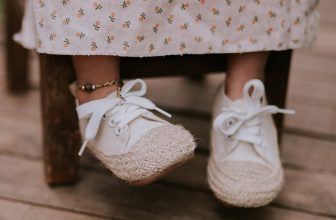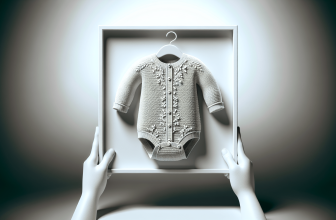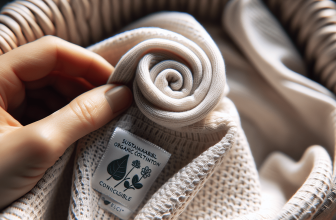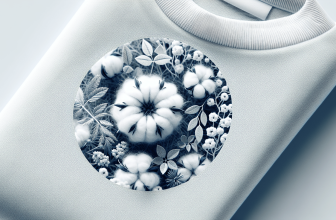When it comes to choosing fabrics for baby clothes, comfort and safety are of utmost importance. As a parent, you want your little one to feel cozy and snug, while also ensuring that their delicate skin is protected. With a wide variety of fabrics available in the market, it can be overwhelming to make the right choice. This article will guide you through the process of selecting comfortable and safe fabrics for your baby’s clothes, making it an enjoyable and stress-free experience for both you and your little bundle of joy.
This image is property of images.unsplash.com.
Factors to Consider when Choosing Baby Clothes Fabrics
When shopping for baby clothes, it’s important to consider several factors when choosing the right fabric. Not only do you want your baby to be comfortable, but you also want to ensure their safety. Here are some key factors to keep in mind:
Softness
Softness is crucial when it comes to baby clothes fabrics. Babies have delicate skin that is more prone to irritation and discomfort. Therefore, opt for fabrics that are known for their softness, such as cotton, bamboo, hemp, or linen. These natural fabrics are gentle and won’t cause any irritation or itching.
Breathability
Babies can easily become overheated, so it’s important to choose fabrics that allow for proper airflow. Fabrics like cotton, bamboo, and linen are known for their breathability, allowing air to circulate and keep your baby cool and comfortable. Avoid synthetic fabrics like polyester or nylon, as they tend to trap heat and moisture.
Durability
Babies can be quite active, which means their clothes should be able to withstand their movements and playtime. Look for fabrics that are durable and can withstand multiple washes without losing their shape or quality. Fabrics like cotton, hemp, and linen are known for their durability and can withstand the wear and tear of everyday use.
Hypoallergenicity
All babies have different sensitivities, and some may be more prone to allergies or skin irritations. To minimize the risk of allergic reactions, choose hypoallergenic fabrics that are less likely to cause irritation. Natural fabrics like cotton, bamboo, and hemp are generally hypoallergenic and safe for sensitive skin.
Chemical-Free
To ensure your baby’s safety, it’s important to avoid fabrics that are treated with harmful chemicals. Look for clothing labeled as “chemical-free” or “organic” to minimize exposure to toxins. These fabrics are free from harmful substances like pesticides, formaldehyde, or flame retardants.
Flame Retardant
While flame retardant fabrics may offer an extra layer of safety, some parents prefer to avoid them due to potential health concerns. If you decide to choose flame retardant fabrics, look for those that are free from harmful chemicals and have been tested for safety.
Stretchability
Babies move a lot, so it’s important to choose fabrics that provide flexibility and allow for comfortable movement. Fabrics containing spandex or elastane offer stretchability, making it easier for your baby to move around and explore their surroundings. However, avoid fabrics that are too tight or restrictive, as they may hinder your baby’s freedom of movement.
Ease of Care
As a new parent, you’ll have your hands full, so choosing baby clothes fabrics that are easy to care for is crucial. Look for fabrics that are machine washable and can withstand repeated washing without shrinking or fading. Fabrics like cotton and linen are generally easy to care for and require minimal maintenance.
Sustainability
If you are conscious about the environment, you may want to consider choosing fabrics that are sustainable and eco-friendly. Natural fabrics like cotton, bamboo, hemp, and linen are biodegradable and renewable, making them more environmentally friendly compared to synthetic fabrics.
Price
Lastly, consider your budget when choosing baby clothes fabrics. While natural and organic fabrics may be more expensive, they often offer better quality and durability, making them worth the investment. However, there are also affordable options available that provide comfort and safety without breaking the bank.
Natural Fabrics
When it comes to baby clothes fabrics, natural options are often the preferred choice for many parents. Here are some commonly used natural fabrics:
Cotton
Cotton is one of the most popular fabrics for baby clothes due to its softness and breathability. It is gentle on the skin, hypoallergenic, and easy to care for. Organic cotton is even better, as it is grown without the use of pesticides or synthetic fertilizers, making it safer for your baby and the environment.
Bamboo
Bamboo is a sustainable and eco-friendly fabric that is becoming increasingly popular for baby clothes. It is incredibly soft, hypoallergenic, and has natural moisture-wicking properties, making it ideal for babies with sensitive skin or those prone to sweating. Bamboo fabric is also thermoregulating, keeping your baby cool in warm weather and warm in cooler temperatures.
Hemp
Hemp fabric is another natural option that is gaining popularity in the baby clothing industry. It is durable, breathable, and naturally hypoallergenic. Hemp fabric has antibacterial and antimicrobial properties, making it resistant to odor and mold growth. Additionally, hemp is a fast-growing plant that requires minimal water and pesticides, making it an eco-friendly choice.
Linen
Linen is a lightweight and breathable fabric that is perfect for warmer climates. It has excellent moisture-wicking properties, keeping your baby dry and comfortable. Linen is also durable and becomes softer with each wash. However, it can wrinkle easily, so it may require some extra care and ironing.
Synthetic Fabrics
While natural fabrics are often preferred for baby clothes, synthetic fabrics also have their advantages. Here are some commonly used synthetic fabrics:
Polyester
Polyester is a synthetic fabric that is known for its durability and wrinkle resistance. It is easy to care for and dries quickly. However, polyester is not as breathable as natural fabrics and can trap heat and moisture, making it less suitable for hot weather.
Nylon
Nylon is a lightweight and strong synthetic fabric that is commonly used in baby clothes. It is stretchable and retains its shape well, making it ideal for active babies. Nylon is also quick-drying and easy to care for. However, like polyester, it is not as breathable as natural fabrics.
Acrylic
Acrylic is a synthetic fabric that is often used as an alternative to wool. It is lightweight, soft, and provides warmth. Acrylic fabrics are also less likely to cause allergies or irritate sensitive skin. However, acrylic is not as breathable as natural fabrics and can trap heat, so it may not be the best choice for warmer weather.
Spandex
Spandex, also known as elastane, is a synthetic fabric that provides stretch and flexibility. It is often blended with other fabrics to add stretchability to baby clothes. Spandex allows for comfortable movement and is ideal for active babies. However, it is important to ensure that spandex is not used in excessive amounts, as it can cause tightness or discomfort.
Blended Fabrics
Blended fabrics combine the advantages of different materials to create unique qualities and features. Here are some commonly used blended fabrics in baby clothes:
Cotton/Polyester
Cotton/polyester blends combine the softness of cotton with the durability of polyester. These fabrics are easy to care for, wrinkle-resistant, and retain their shape well. The blend provides comfort and stretchability, making it suitable for active babies.
Cotton/Spandex
Cotton/spandex blends combine the softness of cotton with the flexibility of spandex. These fabrics offer stretchability and allow for comfortable movement. They are often used in baby clothes that require a snug fit or extra flexibility.
Cotton/Bamboo
Cotton/bamboo blends combine the softness of cotton with the natural moisture-wicking properties of bamboo. These fabrics are incredibly soft, hypoallergenic, and breathable. The blend provides comfort and helps regulate your baby’s body temperature.
This image is property of images.unsplash.com.
Testing the Fabric Safety
Ensuring the safety of the fabric used in baby clothes is essential. Here are some tests and certifications to look for:
Check Labels for Certification
When shopping for baby clothes, look for labels or tags that indicate safety certifications. These certifications ensure that the fabric has undergone testing and meets certain safety standards. Some common certifications to look for include OEKO-TEX Standard 100, GOTS (Global Organic Textile Standard), or CPSIA (Consumer Product Safety Improvement Act).
Look for OEKO-TEX Standard 100 Certification
OEKO-TEX Standard 100 certification is a globally recognized standard for textile safety. It ensures that the fabric used in baby clothes is free from harmful substances and chemicals. Fabrics with this certification have been tested for a range of substances, including heavy metals, formaldehyde, and allergenic dyes.
Fire Resistance Testing
Fire resistance testing is crucial for baby clothes to minimize the risk of accidents. Some fabrics may undergo flame retardant treatment, which can provide an additional layer of safety. Look for fabric labels that indicate compliance with fire safety regulations or certifications such as the NFPA 701 standard for flame resistance.
Allergy Testing
If your baby has known allergies or sensitivities, it’s important to look for fabrics that have undergone allergy testing. Hypoallergenic fabrics, such as those made from organic cotton or bamboo, are less likely to cause irritation or allergic reactions.
Tips for Choosing Comfortable and Safe Baby Clothes
Now that you have a better understanding of the factors to consider and the different types of fabrics available, here are some tips to help you choose comfortable and safe baby clothes:
Consider Your Baby’s Sensitivities
Every baby is unique, and some may have sensitivities or allergies to certain fabrics. Pay attention to how your baby’s skin reacts to different materials, and choose fabrics that work well for them. If your baby has sensitive skin, opt for hypoallergenic and natural fabrics like organic cotton or bamboo.
Opt for Organically Grown Fabrics
Organically grown fabrics, such as organic cotton or bamboo, are free from pesticides, synthetic fertilizers, and other harmful chemicals. They are a safer option for your baby and the environment. Look for clothing labels that indicate the use of organic fabrics.
Avoid Fabrics with Harsh Chemicals
Some fabrics may be treated with chemicals that can be irritating or harmful to your baby. It’s best to avoid fabrics that are labeled as treated with flame retardants or other chemical finishes. Instead, choose fabrics that are labeled as chemical-free or organic.
Ensure Proper Fit
Proper fit is crucial for your baby’s comfort and safety. Avoid clothes that are too tight or restrictive, as they can hinder your baby’s movement and cause discomfort. Opt for clothes that allow for easy movement and have well-fitting necks, cuffs, and waistbands.
Prioritize Breathability
Babies can easily become overheated, so it’s important to choose clothes that allow for proper airflow. Fabrics like cotton, bamboo, and linen are breathable and help regulate your baby’s body temperature. Avoid synthetic fabrics that trap heat and moisture.
Choose Easy-to-Care-for Fabrics
As a new parent, you’ll appreciate fabrics that are easy to care for. Look for machine-washable fabrics that can withstand repeated washing without shrinking, fading, or losing their shape. Fabrics like cotton and bamboo are generally easy to care for and require minimal maintenance.
Be Mindful of Dyes and Prints
Some dyes and prints used in baby clothes may contain chemicals that can be harmful or cause skin irritation. Look for clothes with natural or non-toxic dyes and prints. If possible, choose clothes with water-based or vegetable-based dyes.
Check for Loose or Small Parts
Before purchasing baby clothes, inspect them for any loose threads, buttons, or small parts that can pose a choking hazard. Ensure that all buttons and snaps are securely attached and that there are no loose embellishments or decorations.
Research Brands and Read Reviews
Take the time to research different brands and read customer reviews before making a purchase. Look for brands that prioritize safety, transparency, and use high-quality fabrics. Customer reviews can provide valuable insights into the comfort, durability, and safety of baby clothes.
Consider the Season
Consider the weather and season when choosing fabrics for baby clothes. Opt for lightweight and breathable fabrics like cotton or bamboo for hot weather, and choose warmer fabrics like cotton or fleece for colder temperatures. Layering options can be a great way to adjust your baby’s clothing to changing weather conditions.
With these tips in mind, you can confidently choose comfortable and safe fabrics for your baby’s clothes. Prioritizing softness, breathability, durability, and hypoallergenicity will help keep your baby happy and comfortable while minimizing any potential skin irritations or allergies. Additionally, checking fabric safety certifications and following recommended testing guidelines will ensure that you are making the best choices for your baby’s wellbeing. So go ahead and enjoy dressing your little one in cozy, safe, and stylish outfits!
This image is property of images.unsplash.com.











